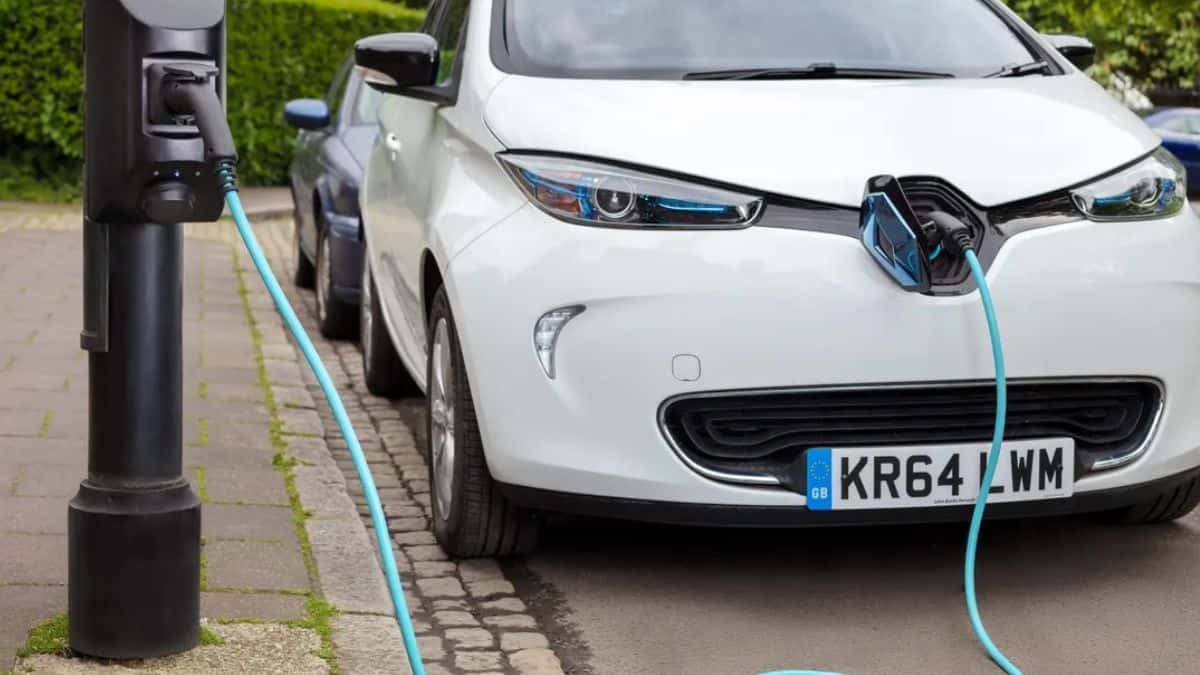California's Exclusive EV Mandate Under Fire From Automakers

Table of Contents
The Core of California's EV Mandate and its Ambitions
California's ZEV regulations represent a bold commitment to transitioning to a cleaner transportation future. The heart of the mandate lies in its progressive sales quotas for EVs, culminating in a complete ban on the sale of new gasoline-powered passenger cars and trucks by 2035. This phased approach aims to steadily increase the market share of electric vehicles, ultimately achieving a near-total shift to zero-emission vehicles. CARB, the state agency responsible for implementing the mandate, has set specific sales targets for various vehicle classes, ensuring a gradual yet ambitious timeline for EV adoption.
- Phased Approach: The mandate doesn't mandate an immediate switch. Instead, it implements progressively stricter sales targets for EVs over the next decade, allowing automakers time to adjust their production and supply chains.
- Specific Sales Targets: CARB's regulations outline precise sales quotas for different vehicle categories, ranging from passenger cars to SUVs and trucks, ensuring a balanced approach to electrification across the automotive market.
- Incentives and Penalties: While the mandate itself doesn't directly include financial penalties, it indirectly incentivizes compliance through the potential loss of market share in a state known for its early adoption of green technology. The state also offers various incentives for EV purchases to support consumer adoption.
Automakers' Arguments Against the Mandate
The auto industry's opposition to California's EV mandate is multifaceted and deeply rooted in concerns about the practicality and economic feasibility of such a rapid transition. Automakers cite several key challenges:
- Manufacturing Capacity: Scaling up EV production to meet the aggressive targets presents a significant hurdle. Existing manufacturing facilities are not readily adaptable to mass EV production, requiring substantial investments in new infrastructure and technologies.
- Battery Supply Chain Issues: The availability of batteries, a critical component of EVs, is a major constraint. The current supply chain struggles to meet the growing global demand, potentially creating bottlenecks that could hinder California's ambitious goals.
- Charging Infrastructure: Widespread adoption of EVs requires a robust and reliable charging infrastructure. The current network, while growing, remains inadequate to support the projected surge in EV ownership required by the mandate.
- Affordability: Currently, EVs are generally more expensive than comparable gasoline-powered vehicles, making them inaccessible to many consumers. Addressing affordability is crucial for widespread adoption.
- Consumer Demand: While EV demand is increasing, it's uncertain whether consumer demand will keep pace with the mandate's aggressive timeline. Concerns exist that forcing the issue could lead to market resistance.
Specific statements from automakers often highlight these concerns, emphasizing the need for a more gradual and realistic approach to EV adoption.
The Economic and Political Ramifications of the Mandate
California's EV mandate carries significant economic and political weight, sparking debates about job creation, economic impact, and regulatory uncertainty.
- Job Creation vs. Job Losses: While the mandate could create jobs in the EV sector, including battery production, charging infrastructure development, and related industries, it also risks job losses in traditional auto manufacturing and associated industries.
- Political Lobbying: The mandate has become a focal point for intense political lobbying, with automakers actively engaging in efforts to influence the regulations, often arguing for a more moderate approach.
- Legal Challenges: The aggressive nature of the mandate has prompted legal challenges from various stakeholders, creating regulatory uncertainty and delaying implementation efforts.
Alternative Solutions and Compromises
Addressing the concerns of automakers without compromising environmental goals requires exploring alternative approaches:
- Easing the Transition: A more gradual phase-out of gasoline vehicles, perhaps prioritizing hybrid vehicles as a transitional technology, could offer a more manageable path to electrification.
- Investment in Charging Infrastructure: Significant investment in public and private charging networks is essential to alleviate range anxiety and increase consumer confidence in EVs.
- Making EVs More Affordable: Government incentives, such as tax credits and rebates, could make EVs more accessible to a wider range of consumers, stimulating demand.
- Flexible Regulations: Regulations could be adapted to account for the challenges faced by different vehicle segments, ensuring a balanced approach to the transition.
Conclusion
California's EV mandate represents a significant policy experiment with far-reaching consequences for the environment and the automotive industry. While the ambitious goal of achieving near-total EV adoption by 2035 is laudable from an environmental perspective, the concerns raised by automakers regarding feasibility, affordability, and consumer demand are legitimate and require careful consideration. The ongoing debate highlights the need for a balanced approach, one that prioritizes environmental protection while ensuring a just and economically viable transition. Finding a path that addresses both environmental goals and the industry's concerns is crucial for the successful implementation of California's electric vehicle mandate and its impact on the future of transportation. Learn more about the ongoing debate surrounding California's ambitious electric vehicle mandate and its potential impact on the future of transportation. Share your thoughts on the challenges and opportunities presented by this landmark policy.

Featured Posts
-
 Extended Cellcom Outage Leaves Customers Without Calling Or Texting Capabilities
May 19, 2025
Extended Cellcom Outage Leaves Customers Without Calling Or Texting Capabilities
May 19, 2025 -
 Eurovision 2025 Fechas De Las Semifinales Y Final
May 19, 2025
Eurovision 2025 Fechas De Las Semifinales Y Final
May 19, 2025 -
 Paige Bueckers U Conn Huskies Of Honor Induction On Senior Day
May 19, 2025
Paige Bueckers U Conn Huskies Of Honor Induction On Senior Day
May 19, 2025 -
 School Employee Among Fsu Shooting Victims Family Connection To Cia Revealed
May 19, 2025
School Employee Among Fsu Shooting Victims Family Connection To Cia Revealed
May 19, 2025 -
 Global Art From 1850 1950 A Contemporary Art Review
May 19, 2025
Global Art From 1850 1950 A Contemporary Art Review
May 19, 2025
Latest Posts
-
 Jennifer Lawrence And Cooke Maroney Another Public Appearance After Baby No 2 Rumors
May 19, 2025
Jennifer Lawrence And Cooke Maroney Another Public Appearance After Baby No 2 Rumors
May 19, 2025 -
 Following Baby No 2 Reports Jennifer Lawrence And Cooke Maroney Step Out
May 19, 2025
Following Baby No 2 Reports Jennifer Lawrence And Cooke Maroney Step Out
May 19, 2025 -
 Wednesday Afternoon Cardinal News And Notes Your Daily Dose Of St Louis Baseball
May 19, 2025
Wednesday Afternoon Cardinal News And Notes Your Daily Dose Of St Louis Baseball
May 19, 2025 -
 Jennifer Lawrence And Cooke Maroney Step Out Following Second Baby Reports
May 19, 2025
Jennifer Lawrence And Cooke Maroney Step Out Following Second Baby Reports
May 19, 2025 -
 Jennifer Lawrence And Husband Cooke Maroney Photos Confirm Recent Speculation
May 19, 2025
Jennifer Lawrence And Husband Cooke Maroney Photos Confirm Recent Speculation
May 19, 2025
